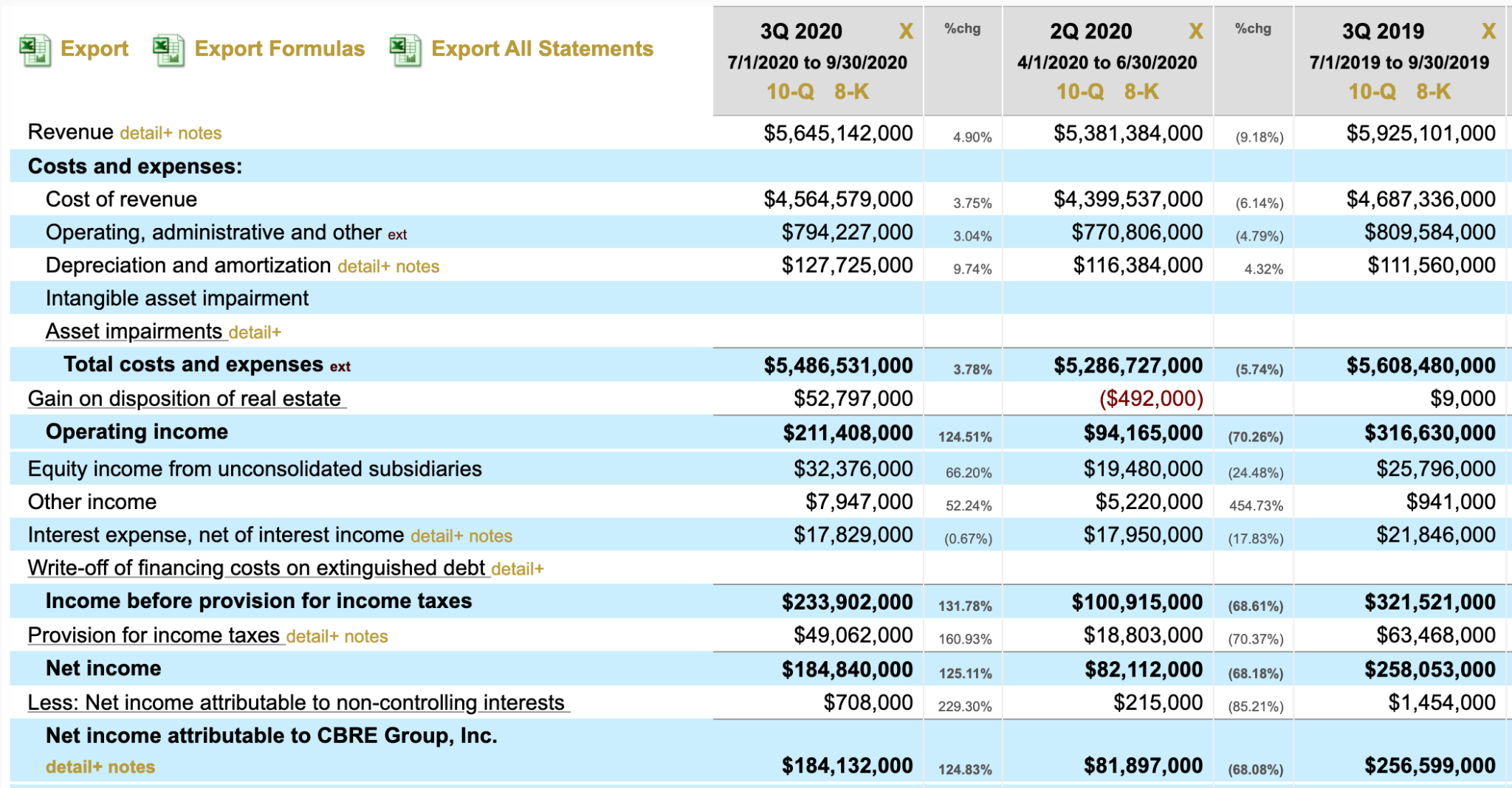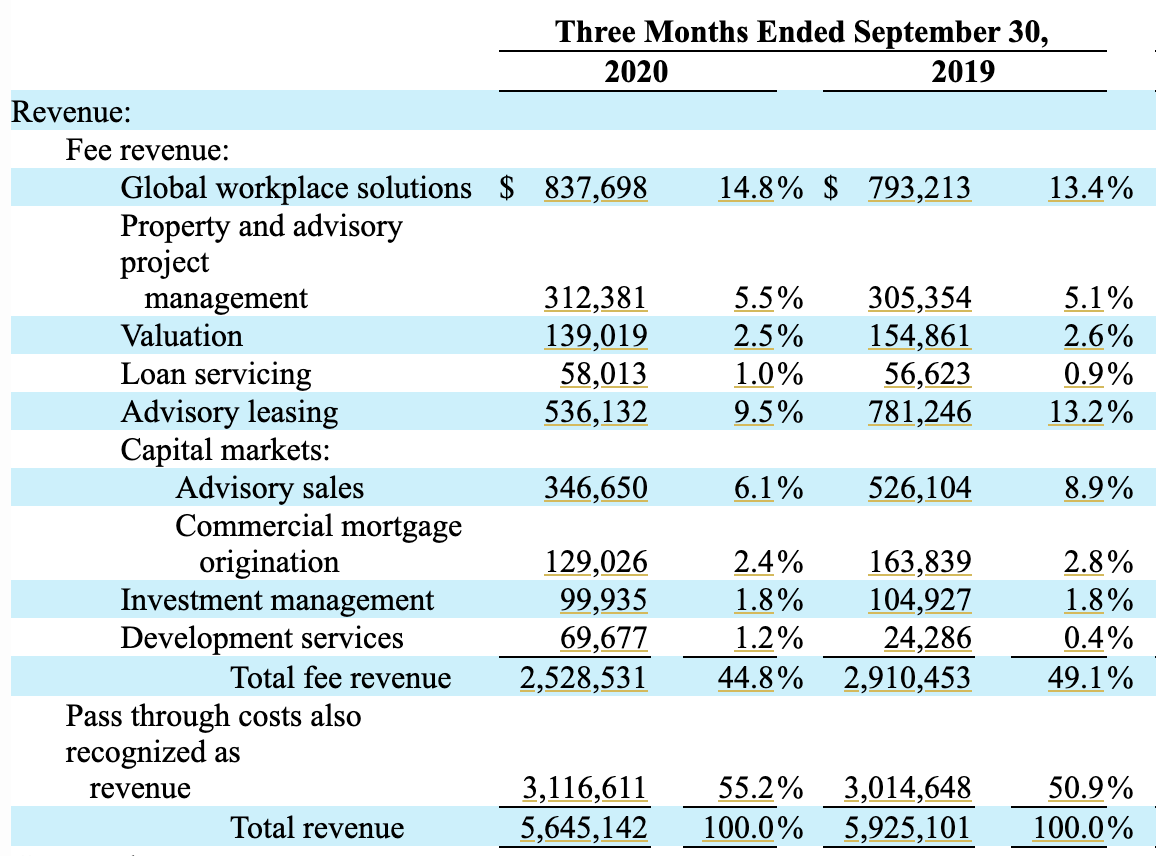Real estate firm CBRE Group ($CBRE) filed its third-quarter report just before Halloween, and we decided to take a look. After all, selling and managing commercial real estate during a pandemic must be a frightful experience these days.
A glance at the income statement did not disappoint. Revenue, operating income, pretax income, net income: all were higher in Q3 2020 than they were in Q2 2020, but all were also still woefully lower than where they were in Q3 2019. See Figure 1, below.

Quite simply, CBRE has been sailing along a robust real estate market for most of the 2010s and into the first month of 2020 — when, as the company said in its Management Discussion & Analysis, “this healthy backdrop changed abruptly in the first quarter of 2020 with the emergence of the COVID‑19 pandemic.”
No surprise, but how has business changed, exactly? Which parts of CBRE are suffering?
We first looked at the Segments portion of CBRE’s footnote disclosures. That gave us some sense of CBRE’s operating divisions; the company reports three operating segments, and (see Fig. 2, below) two of them have actually increased in the first nine months of 2020 — but not enough to eclipse the 16.2 percent drop in its second-largest segment, advisory services.

Those disclosures are better than nothing — but do they really tell us that much? What goes into “Global Workplace Solutions” that is still growing respectably? What about the advisory practice taking things on the chin?
So we moved to CBRE’s Management Discussion & Analysis. That’s where we hit paydirt.
There, CBRE broke down its revenue streams in much more detail, under the guise of letting investors compare the total mix of revenue streams this year to the mix of revenue streams last year. See Figure 3, below.

(In the filing, CBRE’s table also compares the first nine months of 2019 and 2020, but we couldn’t capture a decent image of the whole display.)
To calculate each line item’s change from 2019 to 2020 you do need to do some math, but only some math. For example, fees from global workplace solutions rose 5.6 percent from the year-ago quarter, while revenue from advisory leasing plunged 31.4 percent.
Reading CBRE’s MD&A also provides more context for what all those lines of revenue are, and how the pandemic is shaping them. Here’s one useful paragraph:
COVID-19 is putting downward pressure on parts of our business and creating larger opportunities in other parts. The severe economic effects of the pandemic continued to weigh heavily on higher-margin property lease and sales revenue in the Advisory Services segment. However, global industrial leasing revenue, fueled by e-commerce, and project management activities for occupier clients were resilient during the third quarter. Also, during the third quarter, our Continental Europe business showed signs of recovery and benefited from our diverse service offering during the period.
Our point: you can find a lot of data and insight in the footnotes, although you might need to look in more than one disclosure, or across several disclosures, to get the best picture. It’s a good thing our Interactive Disclosures page, our Trace function, and lots of other features bring exactly that precision and versatility to your fingertips!